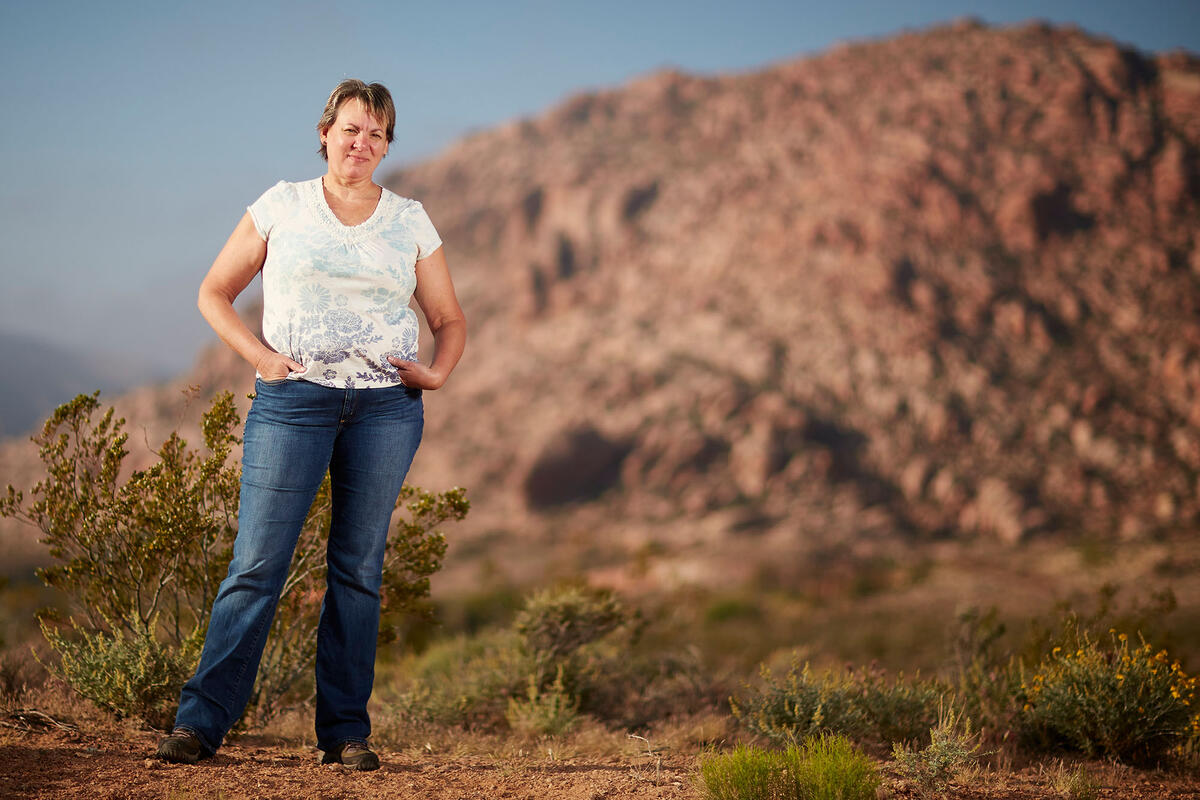Erika Schumacher is no stranger to emergency situations. She tackled the immense responsibility of mitigating the 2014 standoff between Nevada rancher Cliven Bundy and federal agents as the chief ranger for the U.S. Department of Interior’s Bureau of Land Management’s (BLM) Southern Nevada office.
In between handling high-stake crises to ensure the safety of her officers, Schumacher had to regularly decide how to cover a wide swath of land amidst dwindling resources on a dwindling budget.
It was a stressful — and at times thankless — job, but her time at BLM has prepared her to guide the upcoming generation on handling emergency incidents.
Today, Schumacher is the program coordinator for the executive masters in emergency crisis management program in the School of Public Policy and Leadership, ensuring students know how to take charge of a crisis and understand how growing issues such as terrorism have evolved over the years.
What were some of your struggles at the BLM when it came to the budget?
We manage the Burning Man festival, which always brings in a large crowd (in 2007, the crowd was estimated at less than 10,000 and has grown since). At the same time, the drought was affecting our herds over by Cold Creek. Having a lot of my staff at Burning Man and having to manage Red Rock became difficult. I had to ask officers from other places to come help us because I couldn’t manage Red Rock and make sure that our staff was safe to gather at Cold Creek for the horses.
What was your experience like in handling the Bundy standoff in 2014?
It turned into something that none of us expected. It was very frustrating. I really think that the biggest failure was that the BLM and the National Park Service didn’t get the story out. We didn’t stay ahead of the media. I don’t think the federal government as a whole...is geared to deal with social media.
For a month, I just hunkered down at home and went to work. The hardest thing was trying to keep my staff of 15 people positive. I had to remind myself why I got into the job. To this day, I still believe that we were doing the right thing.
Our job isn’t to market ourselves, but maybe that’s something that we need to start to do — to talk about the neat things that we do in communities. We offer a lot of areas for the public to recreate. Without the BLM, you wouldn’t be able to get energy from one place to another. When you see those huge power lines, that is BLM land facilitating electricity coming to your community.
In 2014, there was an armed standoff between Cliven Bundy and his supporters and the BLM regarding grazing fees the bureau said the rancher owed. At the time, Bundy garnered some support from people who believed federal land should be under state control. What is the story you would want the public to know about the standoff?
I would want the public to know how many animals were out there and even when that area had a permit, the number of cattle that were out there was never the permitted amount. It isn’t sustainable for that amount of cows and how dry of a climate and how little forage there is out there to manage livestock.
Were there other challenges that you dealt with aside from budget woes and of course, the Bundy protest?
Probably the hardest thing for us was the Miller incident when the Miller couple shot the two Las Vegas Metro Police officers at Cici’s Pizza. In some ways I felt responsible. Had Bundy not happened, the Millers wouldn’t have popped into Clark County.
I remember another big part of my time at the BLM was trying to keep the non-law enforcement staff feeling comfortable. After Bundy, people felt like they were being followed home. They were afraid to go out into the field. That was probably the biggest shift after the Bundy standoff — being a land management agency and also having to secure our building, staff, Red Rock, and fire stations.
What are students learning in the UNLV emergency crisis management program?
The students will get their masters in emergency management. They learn how to prepare, respond to, and mitigate an emergency situation. For example, if the situation has something to do with hazardous materials, the students will learn how to bypass a community instead of go through a community with those materials.
Most of the students are established in the careers, whether it’s with the fire department or the military. We introduce the students to the Federal Emergency Management Agency and how emergency management has evolved since 9/11 and Hurricane Katrina. They learn about the science of catastrophes like an earthquake, hurricane, or tsunami.
What inspired you to become a part of the BLM?
I grew up in Northern California. We spent most of our time outdoors growing up and valuing what our public lands are for families and communities.



